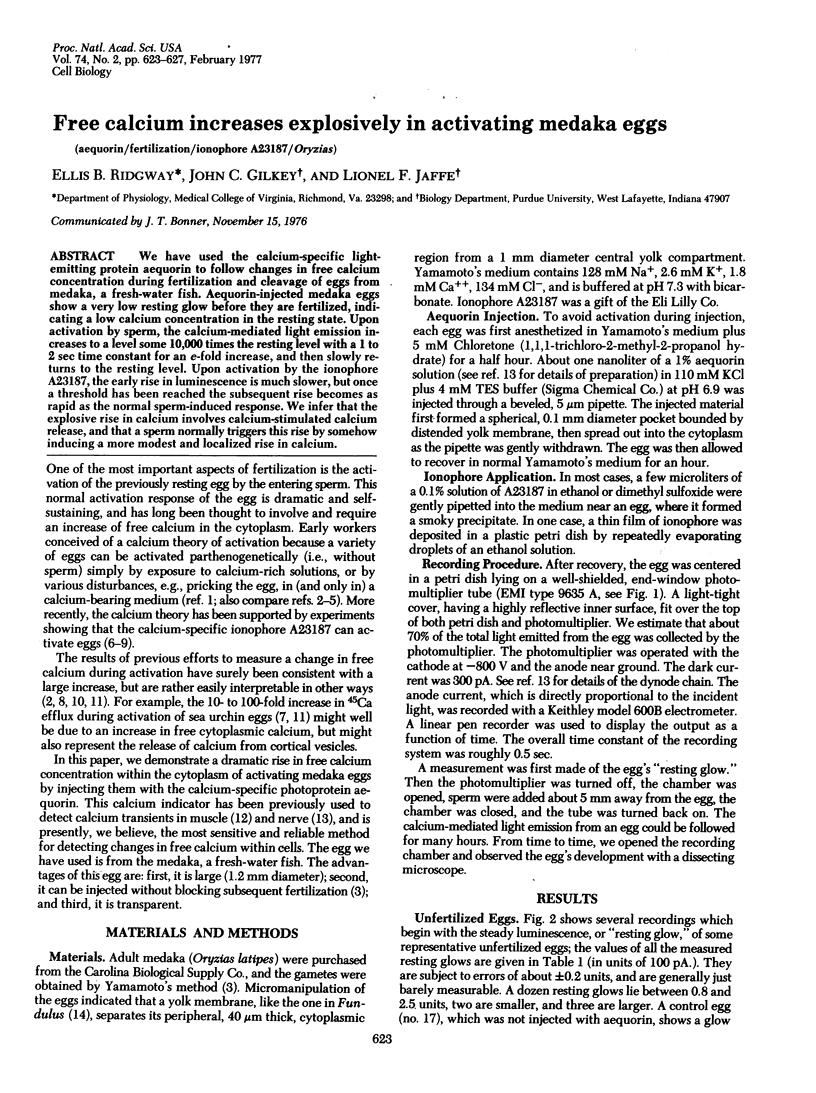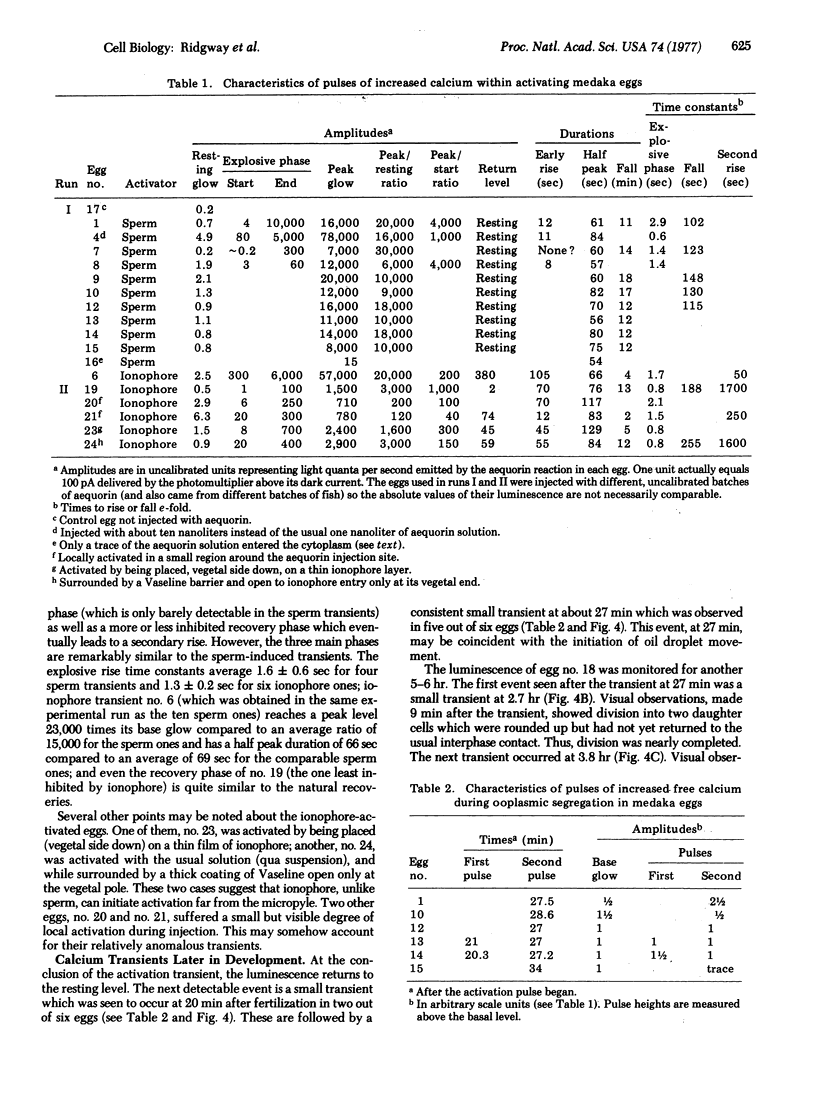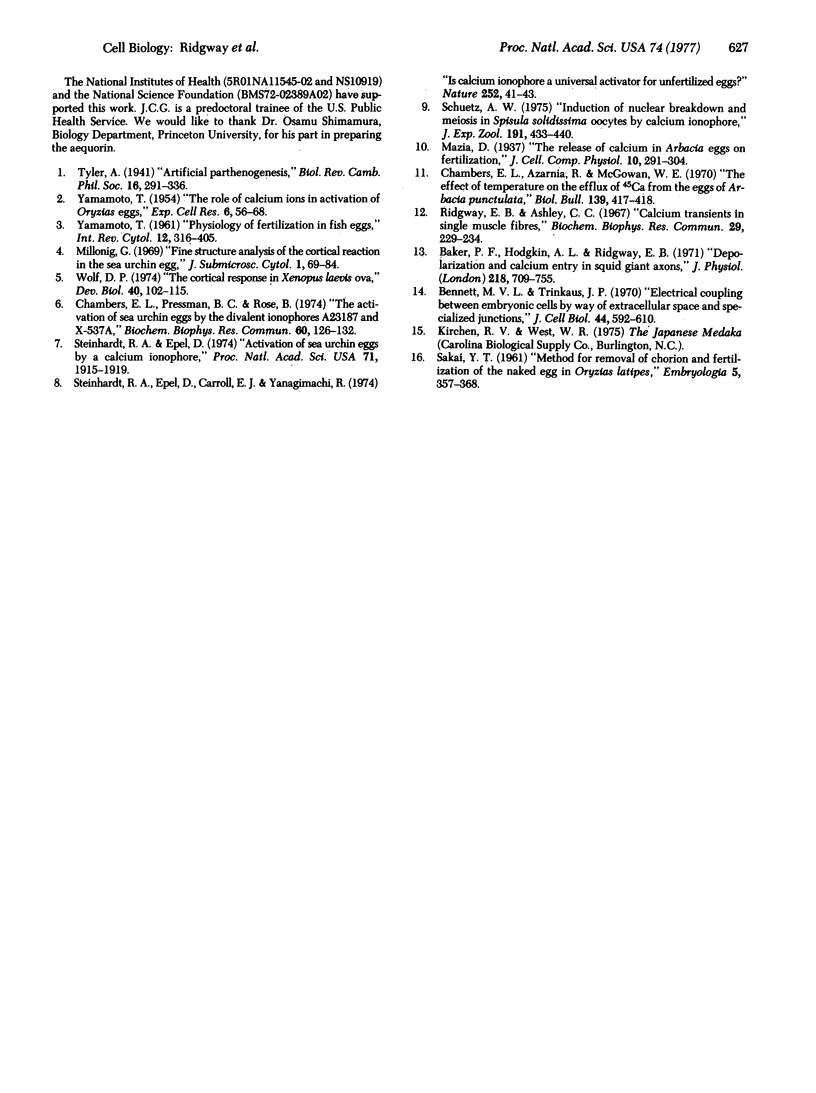Abstract
We have used the calcium-specific light-emitting protein aequorin to follow changes in free calcium concentration during fertilization and cleavage of eggs from medaka, a fresh-water fish. Aequorin-injected medaka eggs show a very low resting glow before they are fertilized, indicating a low calcium concentration in the resting state. Upon activation by sperm, the calcium-mediated light emission increases to a level some 10,000 times the resting level with a 1 to 2 sec time constant for an e-fold increase, and then slowly retruns to the resting level. Upon activation by the ionophore A23187, the early rise in luminescence is much slower, but once a threshold has been reached the subsequent rise becomes as rapid as the normal sperm-induced response. We infer that the explosive rise in calcium involves calcium-stimulated calcium release, and that a sperm normally triggers this rise by somehow inducing a more modest and localized rise in calcium.
Full text
PDF




Images in this article
Selected References
These references are in PubMed. This may not be the complete list of references from this article.
- Baker P. F., Hodgkin A. L., Ridgway E. B. Depolarization and calcium entry in squid giant axons. J Physiol. 1971 Nov;218(3):709–755. doi: 10.1113/jphysiol.1971.sp009641. [DOI] [PMC free article] [PubMed] [Google Scholar]
- Bennett M. V., Trinkaus J. P. Electrical coupling between embryonic cells by way of extracellular space and specialized junctions. J Cell Biol. 1970 Mar;44(3):592–610. doi: 10.1083/jcb.44.3.592. [DOI] [PMC free article] [PubMed] [Google Scholar]
- Chambers E. L., Pressman B. C., Rose B. The activation of sea urchin eggs by the divalent ionophores A23187 and X-537A. Biochem Biophys Res Commun. 1974 Sep 9;60(1):126–132. doi: 10.1016/0006-291x(74)90181-8. [DOI] [PubMed] [Google Scholar]
- Ridgway E. B., Ashley C. C. Calcium transients in single muscle fibers. Biochem Biophys Res Commun. 1967 Oct 26;29(2):229–234. doi: 10.1016/0006-291x(67)90592-x. [DOI] [PubMed] [Google Scholar]
- Schuetz A. W. Induction of nuclear breakdown and meiosis in Spisula solidissima oocytes by calcium ionophore. J Exp Zool. 1975 Mar;191(3):433–440. doi: 10.1002/jez.1401910313. [DOI] [PubMed] [Google Scholar]
- Steinhardt R. A., Epel D. Activation of sea-urchin eggs by a calcium ionophore. Proc Natl Acad Sci U S A. 1974 May;71(5):1915–1919. doi: 10.1073/pnas.71.5.1915. [DOI] [PMC free article] [PubMed] [Google Scholar]
- Steinhardt R. A., Epel D., Carroll E. J., Jr, Yanagimachi R. Is calcium ionophore a universal activator for unfertilised eggs? Nature. 1974 Nov 1;252(5478):41–43. doi: 10.1038/252041a0. [DOI] [PubMed] [Google Scholar]
- Wolf D. P. The cortical response in Xenopus laevis ova. Dev Biol. 1974 Sep;40(1):102–115. doi: 10.1016/0012-1606(74)90112-2. [DOI] [PubMed] [Google Scholar]
- YAMAMOTO T. O. Physiology of fertilization in fish eggs. Int Rev Cytol. 1961;12:361–405. doi: 10.1016/s0074-7696(08)60545-8. [DOI] [PubMed] [Google Scholar]
- YAMAMOTO T. Physiological studies on fertilization and activation of fish eggs. V. The role of calcium ions in activation of Oryzias eggs. Exp Cell Res. 1954 Feb;6(1):56–68. doi: 10.1016/0014-4827(54)90147-0. [DOI] [PubMed] [Google Scholar]



